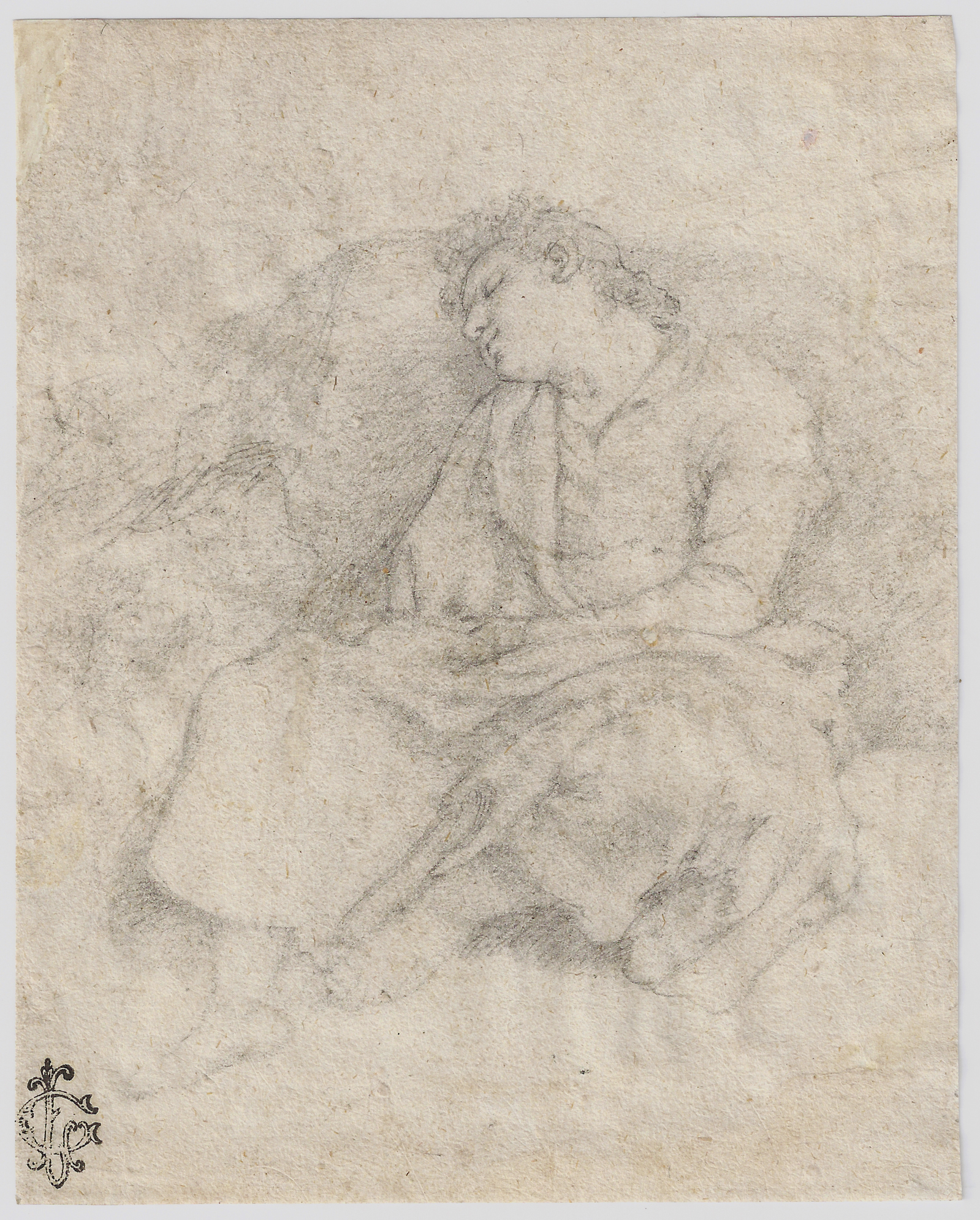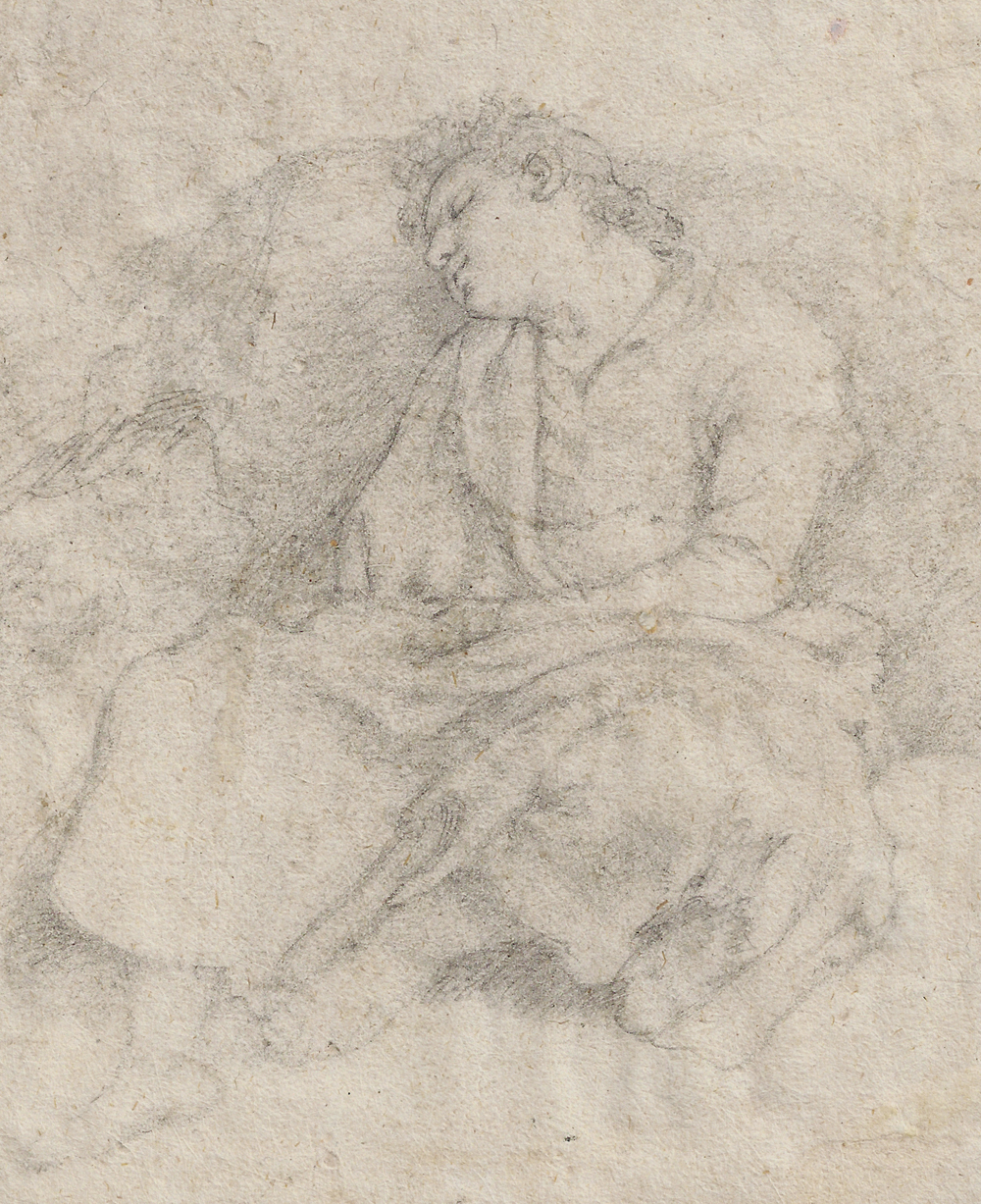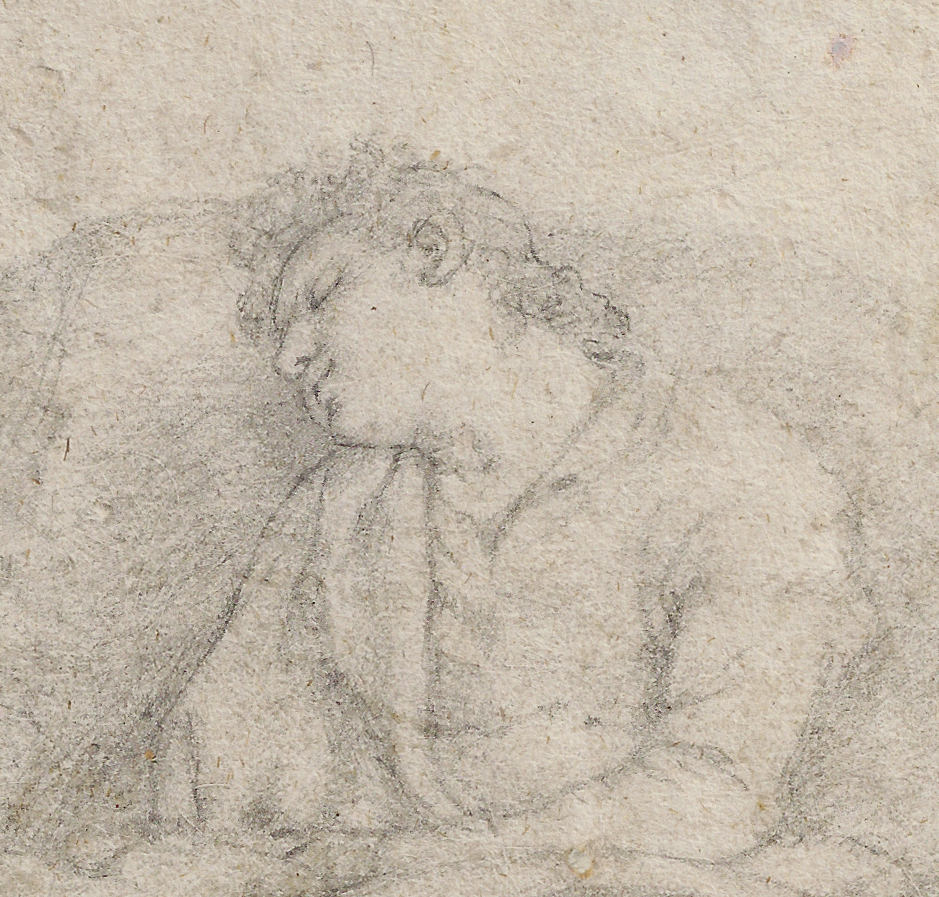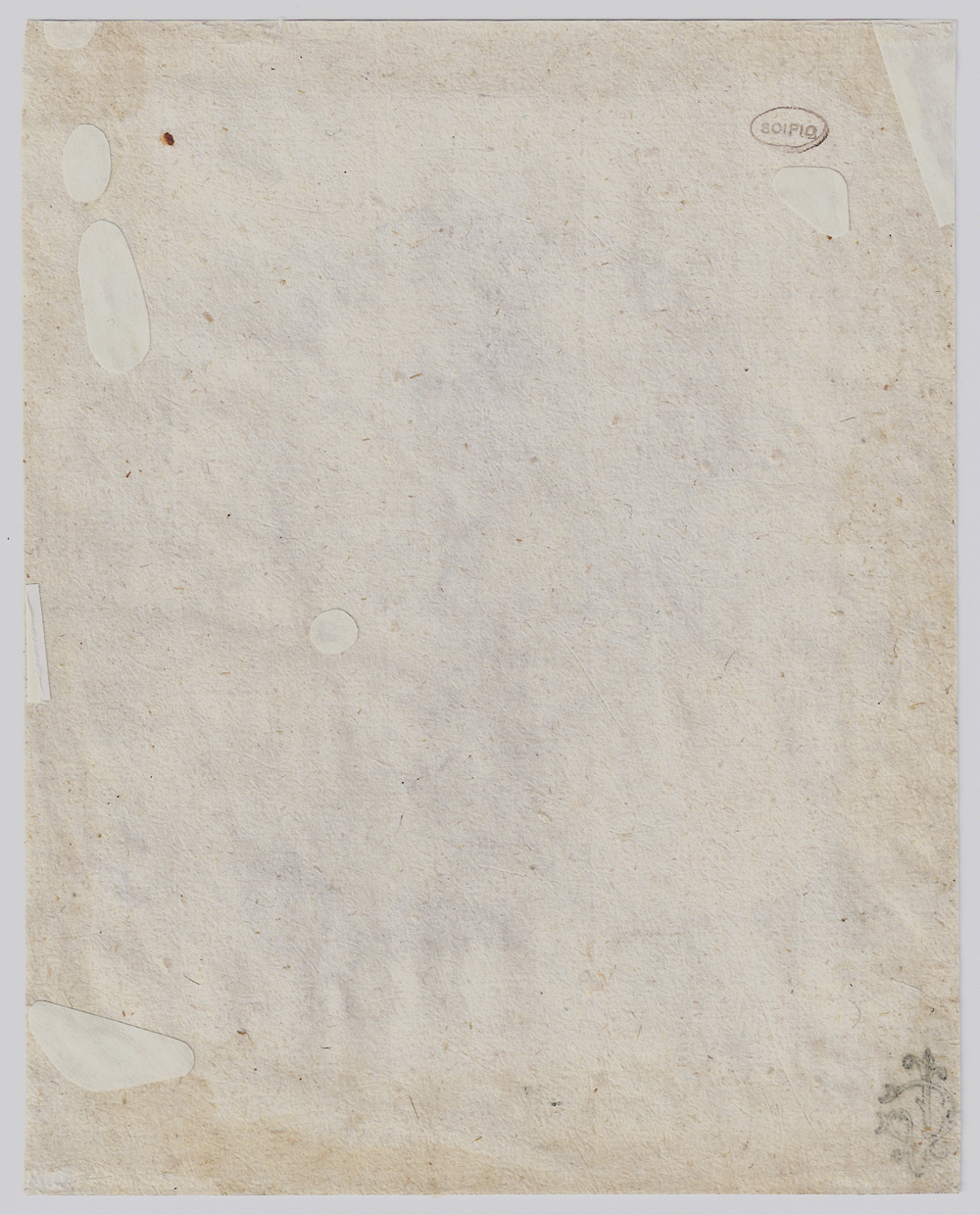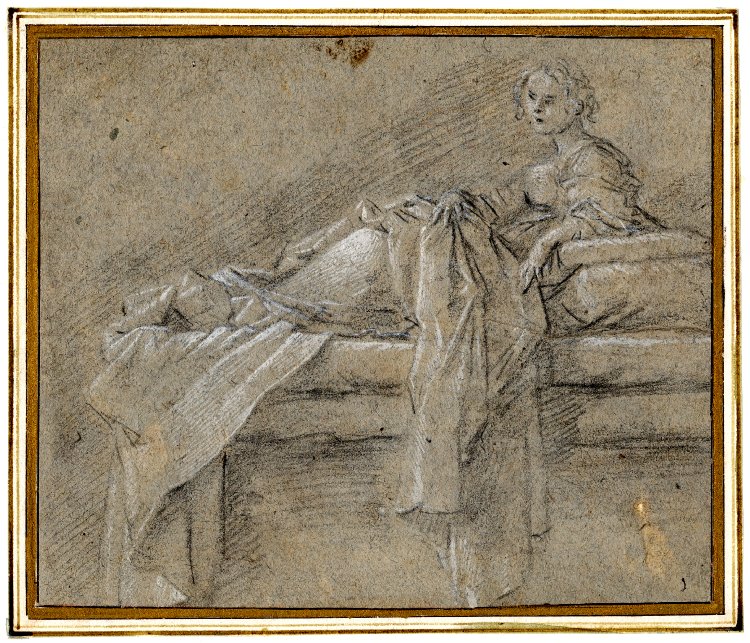GIOVANNI BAGLIONE (Rome c.1566 – 1643 Rome)
Giovanni Baglione (Rome c. 1566 – 1643 Rome)
A Study of a Young Woman Sleeping
Black chalk, 163 x 130 mm (6.4 x 5.1 inch)
Provenance
~ Professor Luigi Grassi, Florence (1858-1937) (Lugt 1171b)
~ Henry Scipio Reitlinger (1882-1950) (according to Ralph Holland's notes)
~ Possibly his sale, London, Sotheby's, 9 December 1953, part of lot 16 or 17
~ With Alister Matthews, Bournemouth
~ From whom purchased in April 1963 by Ralph Holland (1917-2012), until 2013
***
A pupil of the obscure Florentine artist working in Rome, Francesco Morelli, Baglione worked mainly in Rome, initially with a late-Mannerist style influenced by Giuseppe Cesari, the Cavaliere d'Arpino, with whom he collaborated.1 After an intermezzo Caravaggesco when he was heavily influenced by the young Caravaggio in the early years of the seventeenth century, and a Bolognese-influenced phase in the 1610s, Baglione’s final style became more generalized and typical of Roman Early Baroque painters such as Guercino, though always reflecting his training in the Central Italian tradition of disegno, the absence of which he criticized in the Caravaggisti. He spent 1621-22 in Mantua as the court artist of Duke Ferdinando Gonzaga, where the exposure to the fabulous Gonzaga collection of Venetian paintings influenced his style.
Today Baglione is best known as the author of Le nove chiese di Roma (The nine churches of Rome) of 1639 and Le Vite de’ Pittori, scultori, architetti, ed intagliatori (The Lives of Painters, Sculptors, Architects and Engravers), published in 1642, which remains one of the most imporant contemporary sources of artists living in Rome in this period. Baglione is also renowned for filing a suit for libel in August 1603 against Caravaggio, Orazio Gentileschi, Ottavio Leoni, and Filipo Trisegni in connection with some unflattering poems circulating around Rome over the preceding summer, which he appears to have been correct in attributing to Caravaggio's circle. Caravaggio's testimony during the trial as recorded in court documents is one of the few documented records of his thoughts about art and his contemporaries. Years after Caravaggio’s early death in 1610, Baglione was his first biographer, and though he gave him much praise for his early works, his dislike is evident.
The art historian Stephen Ostrow has described Baglione’s drawings to ‘reveal a force and lyricism rarely found in his paintings’, and these words could have been spoken with the present drawing in mind.2 The chalk has been applied very lightly and there are areas where the darker shading creates a sfumato effect. This delicate use of the medium with soft tones is very evocative and touching, and appropriate to the intimate character of the subject of the drawing. The soft parallel hatching is reminiscent of the drawings of the Cavaliere d'Arpino, who was influential in Baglione’s artistic development.
Thematically our drawing may be compared to Baglione's Woman Reclining on a Bed in the British Museum, which is possibly a study for the figure of St Anne in the background of a painting of the Birth of the Virgin.3 It is also similar to Baglione’s Study of a Girl Sleeping with a Cat in her Arms, sold at Sotheby’s, London, 14 December 1992, lot 1.
SOLD
1. For the artist, see: F. Zeri, ‘Giovanni Baglione, pittore erotico’, in: Antologia di Belli Arti, 1977 (4), pp. 339-42 and R. Möller, Der römische Maler Giovanni Baglione. Leben und Werk, Munich 1991.
2. A monographic exhibition has recently been dedicated to Baglione’s drawings, see: Sonja Brink, In una maniera propria: die Zeichnungen des Giovanni Baglione aus der Sammlung der Kunstakademie im Museum Kunst Palast Düsseldorf, Düsseldorf 2008.
3. Black and white chalk, 186 x 219 mm; inv. no. T,12.55. See J.A. Gere and P. Pouncey, Italian drawings in the British Museum, Artists working in Rome, London 1983, no. 43. For the relationship with the painting, see M. Smith O'Neil, Giovanni Baglione, artistic reputation in Baroque Rome, Cambridge 2002, Appendix 2: Drawings, no. 97.
